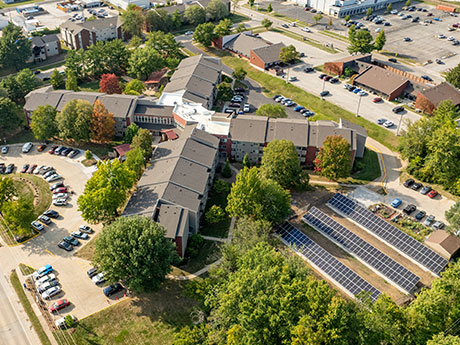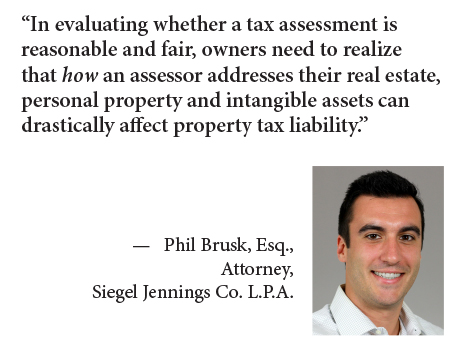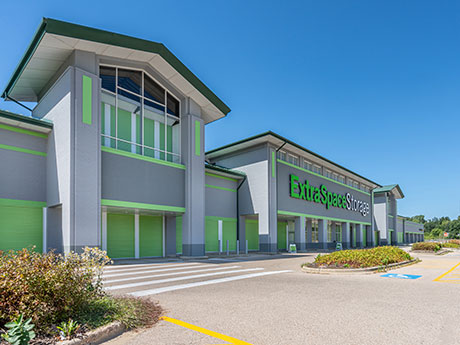By Wilson Ding, Related Midwest The integration of sustainable features in affordable housing often comes with a perceived conflict: the expense of green technologies versus tight operating margins. However, innovative financing strategies and open dialogue with government agencies can bridge the gap, making sustainability more achievable for these projects. By their very nature, affordable housing developments tend to be very complex, often with a number of public and private stakeholders and a multifaceted capital stack. Securing additional resources for the implementation of sustainable technologies in both new and existing communities adds another layer of intricacy, contributing to the sector’s lag behind market-rate in this area. Yet while the installation of sustainable technologies may require a higher upfront investment of time and money, their ability to reduce ongoing expenses makes them a smart long-term strategy. Tax incentives, grants and other subsidies can also help make these projects feasible. Round Barn Manor My firm, Related Midwest, recently finished a $6.8 million renovation of Round Barn Manor, a 156-unit affordable seniors housing community in Champaign, Illinois. Completed in September 2024, the renovation was part of a broader $38.6 million recapitalization initiative carried out in collaboration with Related Affordable, our national affordable housing arm …
Heartland Feature Archive
Housing affordability continues to be a pressing issue across the country. According to the National Low Income Housing Coalition, the U.S. has a shortage of 7.3 million rental homes affordable and available to renters with extremely low incomes. There are 34 affordable and available rental homes for every 100 extremely low-income renter households, which are defined as households either at or below the federal poverty guideline or 30 percent of the area median income (AMI), whichever is higher. “The country is facing a severe shortage of high-quality affordable housing, with demand far exceeding supply in the Midwest and every market we serve across the country,” says Geoff Milz, director of development for Ohio with Pennrose, which maintains eight offices across the U.S. “The housing crisis, compounded further by inflation and the rising cost of living, spans all demographics, geographies and family types.” In short, the need for affordable housing “has never been more critical,” adds Milz. Affordable housing developers are eager to build, but they must get creative to obtain the necessary financing for new projects. Due to the restricted rents, affordable housing properties are unable to generate as much income as market-rate assets. “The primary tool that we use …
By Becky McLaughlin, WithMe Inc. As the seasons change, so do your residents’ needs and desires. Providing amenities and planning events that align with these shifting demands can be a game-changer for property managers. In fact, resident events have been shown to boost satisfaction, improve online reviews and impact lease renewal decisions, making them an essential tool for long-term property success. According to WithMe Inc.’s 2025 amenity outlook survey, which gathered insights from senior multifamily professionals at the country’s top property management companies, including Bozzuto, Greystar and Willow Bridge, there is a rise in resident demand for multipurpose spaces where they can relax, connect with neighbors and work. Finding ways to transform these common spaces to align with the changing seasons not only enhances resident satisfaction but also fosters a vibrant community atmosphere where people feel empowered to live, work and play year-round. Warming up the cooler months As temperatures drop, residents tend to spend more time indoors, increasing foot traffic in the lobby and shared spaces. This presents the perfect opportunity to transform these areas into cozy spots where they can comfortably work, connect and unwind. Imagine plush seating, soft lighting and a hot coffee and cocoa amenity that …
FeaturesHeartland Feature ArchiveMultifamily & Affordable Housing Feature ArchiveNortheast Feature ArchiveSoutheast Feature ArchiveTexas & Oklahoma Feature ArchiveWestern Feature Archive
Forecast Survey: What’s Your Take on Commercial Real Estate in 2025?
by John Nelson
The editors of REBusinessOnline.com are conducting a brief online survey to gauge market conditions in 2025, and we welcome your participation. The survey should only take a few minutes to complete. Questions range from property sectors that you are most bullish on heading into 2025 to trends in deal volume to your outlook for interest rates. The results of our 14th annual survey will be compiled and published in the January issues of our regional magazines. Conducting these surveys is part of our mission at France Media to provide readers with indispensable information, and we couldn’t do it without your help. To participate in our broker/agent survey, click here. To participate in our developer/owner/manager survey, click here. To participate in our lender/financial intermediary survey, click here. (Note: Please remember to click on “done” to properly submit the survey.)
FeaturesHeartland Feature ArchiveIllinoisMidwestNortheastNortheast Feature ArchiveOhioPennsylvaniaSeniors Housing
Dual Appraisal Methods Improve Opportunities to Get Fair Taxation for Seniors Housing Properties
by John Nelson
By Phil Brusk and Caleb Vahcic of Siegel Jennings Co. L.P.A. The seniors housing sector can’t seem to catch a break. Owners grappling with staffing shortages and other operational hardships lingering from the pandemic are facing new challenges related to debt and spiraling costs. High interest rates and loan maturations loom over the industry, with $19 billion in loans coming due within the next 24 months, according to Cushman & Wakefield’s “H1 2024 Market Trends and Investor Survey” on senior living and care. Factors driving high costs include wage pressures, inflation and — incredibly — rising property taxes. Despite operational challenges and declining occupancy at many facilities during the COVID-19 pandemic, property tax relief for seniors housing was mixed. Many assessors resisted downward adjustments to taxable values, maintaining that recovery was around the corner. Now, seniors housing operators face property tax assessments that equal or exceed pre-pandemic levels. As in the hospitality sector, most seniors housing owners understand that their operating properties include more value components than real property alone. In evaluating whether a tax assessment is reasonable and fair, however, owners need to realize that how an assessor addresses their real estate, personal property and intangible assets can drastically …
Amid a slump in investment sales volume, investors eagerly welcomed the Federal Reserve’s interest rate cut in September. The half-percentage point decrease was more than what many in the industry had anticipated, but Fed Chairman Jerome Powell recently indicated that additional rate cuts this year will likely not be as aggressive. The move by the Fed came after a spike in the federal funds rate from near zero in March 2022 to a range of 5.25 to 5.5 percent in July 2023 — a period during which the central bank raised the federal funds rate 11 times. Ultimately, the higher interest rate environment has led to a major slowdown in the sales volume of net lease properties this year, says Randy Blankstein, president of The Boulder Group based in Wilmette, Illinois. “Transaction volume is down approximately 60 percent from 2022 levels,” he says. In a net lease transaction, the tenant pays a portion or all of the taxes, insurance fees and maintenance costs for a property in addition to rent. For the 12-month period that ended in June, net lease investment volume across property types decreased by 34 percent from the same period a year ago to $35.4 billion, according …
DevelopmentFeaturesHeartland Feature ArchiveMidwestMultifamilyMultifamily & Affordable Housing Feature Archive
Construction Sector Braces for Dry Spell in New Apartment Development
by Jeff Shaw
— By Lynn Peisner — Developers and owners are optimistic a slowdown in construction over the next two years will help boost occupancies and rents by cutting into the market-rate supply overhang. This may be good news for owners of existing assets, but it’s less than ideal for those who make a living in the construction business. Or so it would seem. Most construction leaders are unfazed by an impending drought in new development. Some firms say they will rely on other sectors of commercial building to sustain them through the lull in apartment projects. Overall, the consensus among builders is that multifamily remains a secure line of business due to the high cost of owning a single-family home and a shortage of affordable housing. Construction Companies Adapt The National Association of Home Builders (NAHB) expects multifamily starts this year to total 342,000, down 28 percent from 2023. The recent peak was in 2022 when construction starts totaled 547,000. In its U.S. Real Estate Market Outlook 2024, CBRE concluded that this decline in construction starts means that new deliveries annually will be reduced to less than half the current level by 2026. “The pace of multifamily construction starts has slowed this …
Property Assessed Clean Energy (PACE) is a financing tool that provides long-term, low-cost construction financing for new and existing buildings. Some of the eligible improvements include energy efficiency, water efficiency, renewable energy and resiliency measures such as seismic and stormwater measures. For commercial real estate properties, the acronym is listed as C-PACE. Rafi Golberstein, CEO of Minneapolis-based PACE Loan Group, says there are many reasons why developers like PACE financing today, but the most important is the cheaper cost of capital. REBusinessOnline spoke with Golberstein to learn more about the financing tool and its benefits. REBusinessOnline: What is driving momentum for PACE financing? Rafi Golberstein: PACE is effectively solving a hole in the capital stack. In today’s market when banks and mortgage lenders have tightened up significantly, typically lending less and providing less leverage, that creates a pretty large equity check requirement that is significantly larger than it was two years ago. PACE is coming in to help alleviate some of that pressure to allow these projects to still move forward. In some cases, we’re actually cheaper than the banks. For the developer, it makes a lot of sense to use PACE. There are other structural reasons as well. Bank …
With office occupancy still well below pre-pandemic levels due to the prevalence of the hybrid work model and companies downsizing their space needs, property owners are resorting to creative solutions for vacant or underutilized buildings. The conversion of office properties into new uses such as multifamily or hospitality is one approach. While these adaptive reuse projects are not for the faint of heart, they are an important way to avoid demolition. Construction debris from demolition projects contributes to the building industry’s huge carbon footprint, states Alan Barker, principal and residential market leader at Chicago-based architecture firm Lamar Johnson Collaborative (LJC). When considering an office conversion project, the first step is to make sure that the building’s structural integrity can safely accommodate renovations. Beyond that, office buildings that are a good fit for adaptive reuse typically have flexible floor plans, access to light and ventilation, existing utilities that can handle changes in capacity, and a location that offers proximity to amenities, transportation and parking, according to Barker. Recently, LJC created an adaptive reuse scorecard to help developers and building owners assess a property’s potential for a conversion project. The scorecard is comprised of seven categories: development potential; building form; building systems; …
Nearly one-fifth of Americans rent self-storage space, according to a recent study conducted by StorageCafe, an online platform that provides storage unit listings across the nation. Owners and operators of the property type are keen to capitalize on the strong demand. According to StorageCafe, the total amount of new storage space delivered in 2023 reached 49 million square feet, up 15.6 percent from the prior year. The national average rate for a standard 10-by-10-foot, non-climate-controlled unit is currently around $122 per month. The primary demand drivers for self-storage are what the industry refers to as the four D’s — death, divorce, dislocation and downsizing. But there are additional factors at play. Matt Clark, director of operations for Skokie, Illinois-based StorSafe Self Storage, cites remote work and flexible lifestyles; decluttering and minimalism; and urbanization. “With the rise of remote work, individuals seek storage solutions for work-related equipment and belongings, while those with flexible lifestyles require storage for items not needed during travels or temporary stays,” he says. “Minimalism prompts individuals to seek storage for sentimental items or occasional-use belongings. Urban dwellers in compact spaces require storage for seasonal items or bulky furniture that doesn’t fit in their homes.” David Perlleshi, a …











